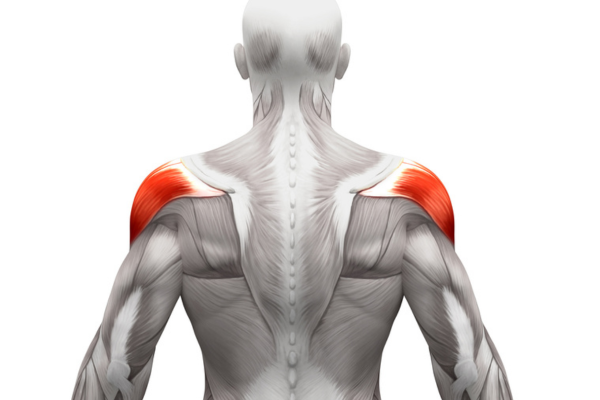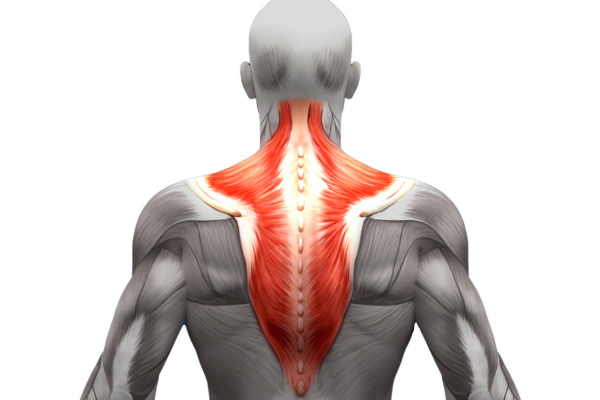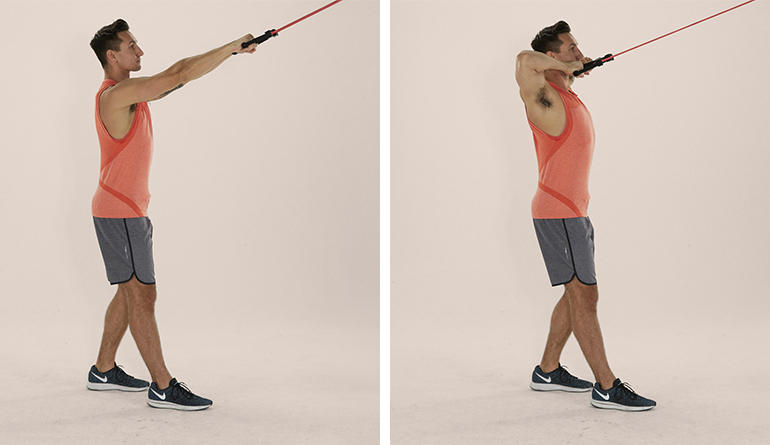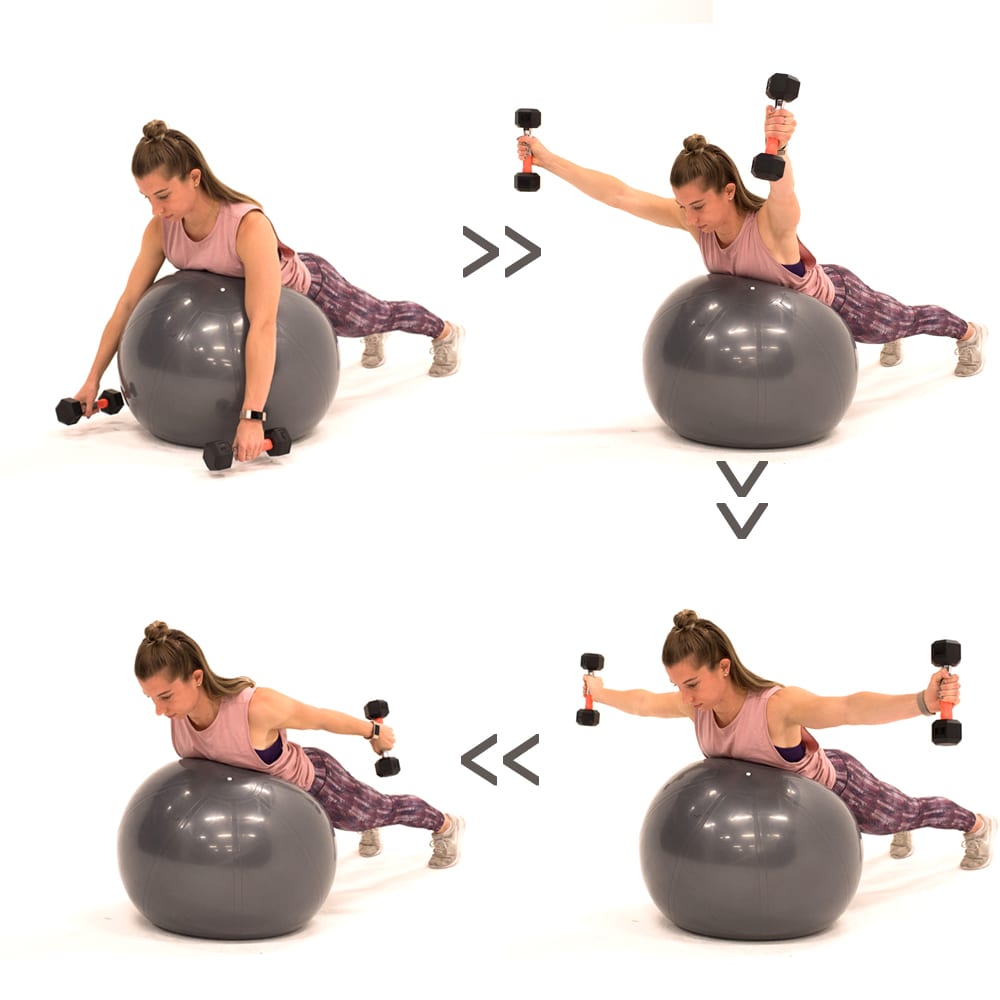Grasp the Cable Rear Delt Fly for Shredded Shoulders
Want larger posture, additional energy in pressing actions, additional cell shoulders, and a additional impressive-looking larger physique — from all angles? There’s a single switch that will get you there that you just’re nearly undoubtedly not doing: the cable rear delt fly.
This simple, little-used practice grows and strengthens the rear delts, a band of muscle that pulls your shoulder and better arm backwards and, when strengthened, gives a variety of completely different benefits as properly.
Cable Rear Delt Fly: Step-by-Step Instructions
- Select a light-weight weight on every stacks of a twin cable machine, and slide the pulleys to spherical shoulder prime.
- Face the machine and seize the cable for the stack on one of the best in your left hand and the cable for the stack on the left in your correct hand (the cables will most likely be crossed in entrance of you).
- Nonetheless coping with the machine, assume a kneeling place — on a pad if obligatory — about two toes behind the doorway stacks of the cable machine.
- Attain your arms instantly forward and upward in entrance of you, about 45 ranges to the bottom. That’s your starting place.
- Sustaining your arms barely bent, slowly draw the cables in large arcs down and behind you, squeezing your rear deltoids as arduous as doable in the end place (take into account pushing the pinkie-sides of your palms down and outward).
- Slowly reverse the movement, return to the start place, and repeat for reps.
Cable Rear Delt Fly Muscle teams Labored
Compared with better lifts similar to the bench press, squat, or deadlift, the cable rear delt fly works small — nevertheless needed — muscle teams that are usually uncared for.
Rear delts

The rear delts originate on the prime of your scapulae (shoulder blades) and insert, or join, to the once more of your larger arm a variety of inches beneath your shoulder joint.
The function of this understated chunk of sinew is to tug your larger arm from a shoulder-height place in entrance of your physique to a level behind your larger physique within the similar plane, a switch known as horizontal abduction.
The rear deltoids moreover rotate your larger arms outward (away from the center line of your physique), a movement technically termed exterior rotation.
Trapezius

To a lesser diploma, cable rear delt flys moreover work the lower portion of the trapezius muscle teams — the kite-shaped muscle that spans your mid and better once more — which help draw your shoulder blades downward.
Small as they’re, nonetheless, the rear delts and reduce traps are important to shoulder function and posture. They counterbalance the movement of the upper trapezius (which shrug the shoulders) and the pec muscle teams of the chest (which pull your shoulders forward and rotate your arms internally).
Cable Rear Delt Fly Benefits
Listed below are a pair the reason why cable rear delt flys deserve a spot in your teaching.
Prevents muscle imbalances
The deltoids are a three-headed muscle liable for elevating your arm in fairly a number of strategies. Amongst train regulars, the rear delts are by far the most-neglected: The doorway delts get a great deal of direct movement from pressing strikes of every type — pushups, bench presses, overhead presses, and the like — and the side delts get tons of affection from lateral raises.
Nonetheless, the rear delts often get solely indirect work from once more strikes like rows and pulldowns. This may end in imbalances among the many many heads of your deltoids, limiting their energy and progress potential. The rear delt cable fly could assist with that.
Improves posture and shoulder function
Underdeveloped rear delts may end in a forward-rounded posture that, over time, may trigger ache in your neck and once more, and poor function inside the shoulder joint.
A few models of cable rear delt flys every week could assist pull you out of the shrugged-shouldered, rounded-back place that many individuals habitually assume all by a variety of the day. This may help improve day-to-day posture whereas allowing you to realize your arm overhead additional comfortably and press additional weight overhead in your upper-body workout routines.
Rear Delt Cable Fly Choices
The rear delt cable fly isn’t the one environment friendly practice for this underappreciated muscle. Nevertheless it certainly is among the many most interesting, as a result of it challenges the muscle by its complete differ of motion, from the stretched place to the completely contracted place.
Most rear-delt strikes are primarily environment friendly when your rear delts are shortened — or completely contracted — nevertheless are a lot much less environment friendly inside the lengthened place. That’s true of the dumbbell reverse fly, which is tough when the dumbbells are completely lifted, nevertheless quite simple — nearly straightforward — when your arms are hanging straight down.
This doesn’t make these varied strikes ineffective. You’ll undoubtedly assemble and strengthen your rear delts using the strikes listed beneath. They’re merely significantly a lot much less environment friendly than the cable mannequin.
1. Dumbbell reverse fly
- Stand collectively along with your toes shoulder-width apart, holding a dumbbell in each hand.
- Hinge on the hips (press the hips once more as you lower your chest) until your chest is almost parallel with the underside. Allow the weights to carry straight down at arm’s measurement, palms coping with each other.
- Sustaining your once more flat and your core braced, enhance your arms out to your sides until they’re based on your physique. Squeeze your shoulder blades collectively on the prime of the movement.
- Return to the start place, and repeat.
2. Resistance band reverse fly
- Keep the handles of a resistance band and assume a shoulder width stance, using every toes to face on the center of the band to secure it.
- Change handles between your two palms so that the bands cross.
- Bend your knees barely and hinge at your hips until your torso is almost parallel to the bottom and your once more is flat. (If obligatory, unfold your toes wider to create additional rigidity on the band.)
- Sustaining your torso nonetheless, enhance the handles as far as doable instantly out to your sides, with the once more of your palms coping with the ceiling.
- Lower the handles completely, and repeat.
3. Resistance band face pull

- Anchor a resistance band to a safe stage a variety of inches above your head.
- Going by the anchor stage, seize the band with an overhand grip, sustaining your palms about six inches apart.
- Step once more from the anchor stage collectively along with your arms extended in entrance of you until you’re feeling rigidity inside the band.
- Sustaining your once more straight and elbows extreme, pull the band in the direction of your face, stopping as quickly because the band approaches your nostril.
- Slowly reverse the switch to return to the start place, and repeat for reps.
4. Dumbbell YTI enhance

- Lie face-down on a stability ball or bench holding a dumbbell in each hand. Let your arms maintain straight in the direction of the bottom, palms coping with each other.
- Sustaining your head neutral, enhance every arms at 45 ranges to kind a “Y” type. Pause briefly. Then, lower the weights once more to the start place.
- Elevate the weights as soon as extra, this time straight out to your sides to kind a “T” type, palms coping with down. Pause briefly on the prime of the movement sooner than reducing the weights.
- Lastly, elevate the weights by extending them straight behind you to create an “I” type, palms coping with each other. Keep briefly and reduce the weights.
- Repeat your full sequence for the desired number of reps.
